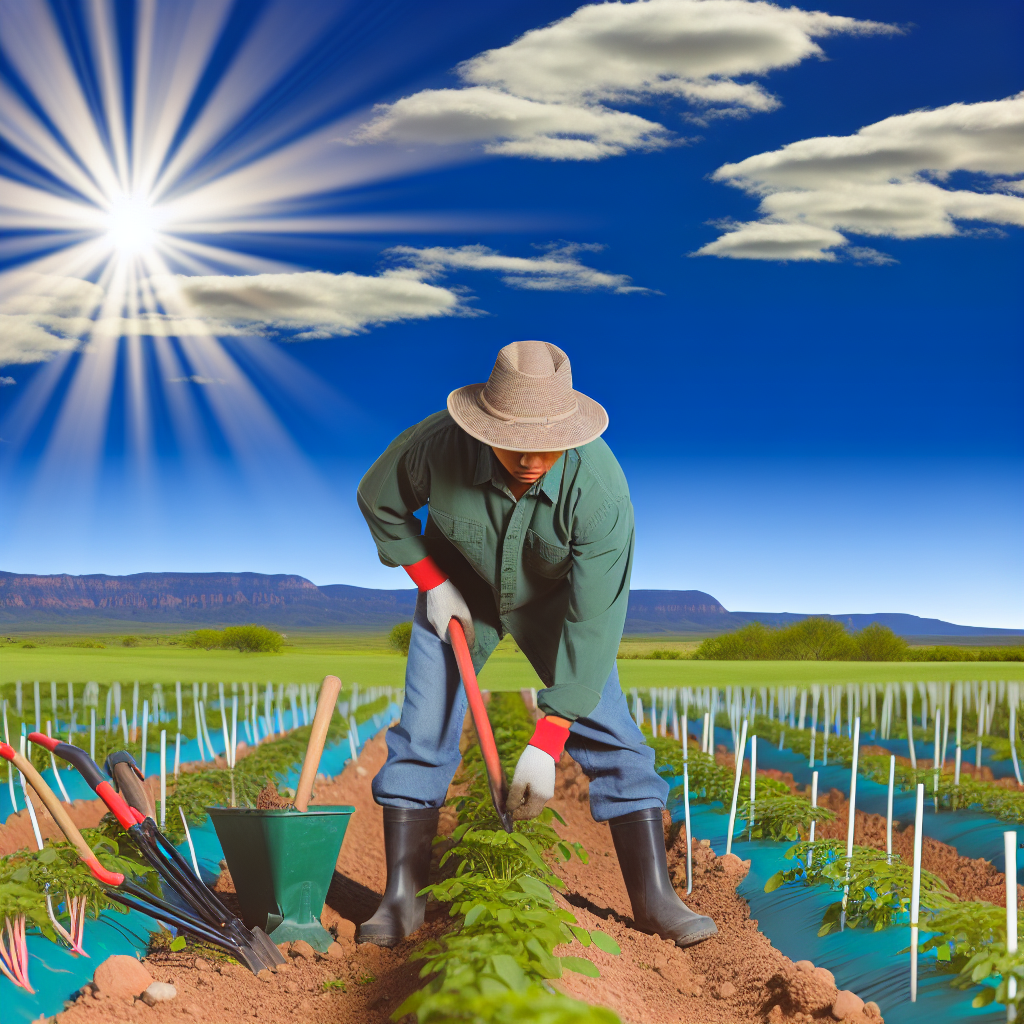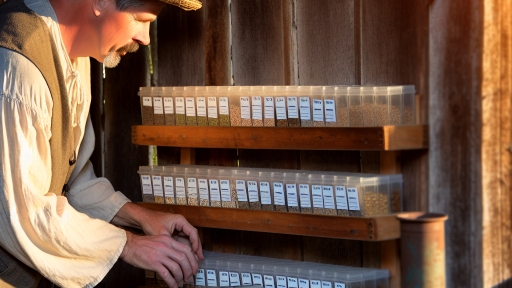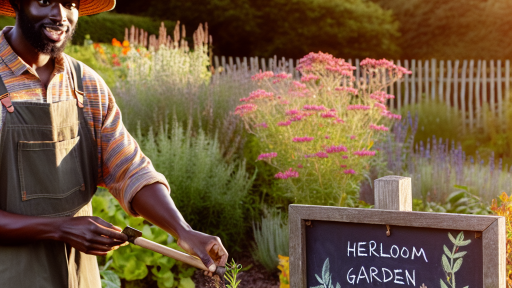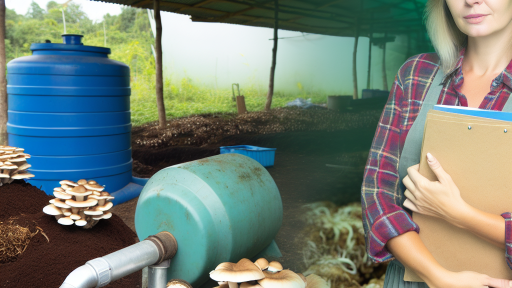Introduction to Edible Landscaping
Edible landscaping transforms traditional gardens into productive areas.
This approach integrates food-producing plants into ornamental designs.
As a result, it creates beautiful and functional outdoor spaces.
Moreover, this practice has gained popularity in urban and suburban areas.
Homeowners increasingly seek sustainable solutions and fresh produce.
Edible landscaping helps maximize yields while enhancing the environment.
It provides an opportunity for food cultivation in small spaces.
Additionally, it encourages biodiversity and attracts beneficial wildlife.
Benefits of Edible Landscaping
Edible landscaping offers numerous advantages.
First, it promotes healthy eating habits.
Access to fresh fruits and vegetables is just outside your door.
Second, it reduces grocery costs.
Growing your own food minimizes expenditures on produce.
Furthermore, this practice encourages sustainable gardening techniques.
It allows the use of organic methods and composting.
Transform Your Agribusiness
Unlock your farm's potential with expert advice tailored to your needs. Get actionable steps that drive real results.
Get StartedLastly, edible gardens create aesthetically pleasing environments.
Types of Edible Plants to Incorporate
When designing an edible landscape, choose a variety of plants.
Herbs, vegetables, and fruits can all thrive together.
Consider using:
- Herbs such as basil, rosemary, and mint.
- Vegetables like tomatoes, peppers, and lettuce.
- Fruits including strawberries, blueberries, and dwarf apple trees.
By utilizing these options, you create a diverse and fruitful landscape.
Design Principles for Success
Successful edible landscaping requires thoughtful design.
First, assess the sunlight and soil conditions on your property.
Next, plan for efficient space usage.
Incorporate vertical gardening techniques to save space.
Additionally, focus on aesthetics alongside functionality.
Choose plants that offer visual appeal throughout the growing season.
Finally, maintain a balanced ecosystem in your landscape.
This encourages pollinators and helps control pests naturally.
Understanding Soil Health
Importance of Soil Health
Soyl health serves as the foundation for any successful garden.
Healthy soil ensures your plants receive essential nutrients.
Moreover, it improves water retention and drainage capabilities.
Consequently, healthy soil enhances overall plant growth.
Components of Soil Health
Healthy soil consists of a variety of components.
These include organic matter, minerals, and living organisms.
Organic matter enriches the soil and improves its structure.
Minerals provide crucial nutrients for plant development.
Also, microorganisms break down organic matter and promote fertility.
Assessing Soil Health
Regularly testing your soil helps identify its health status.
Soil tests reveal nutrient levels and pH balance.
Showcase Your Farming Business
Publish your professional farming services profile on our blog for a one-time fee of $200 and reach a dedicated audience of farmers and agribusiness owners.
Publish Your ProfileUnderstanding these factors allows for targeted amendments.
Therefore, you can make informed decisions for improvement.
Improving Soil Health
Several practices enhance soil health over time.
- Add organic compost to replenish nutrients.
- Incorporate cover crops to prevent erosion.
- Rotate crops to enhance biodiversity.
- Avoid chemical pesticides that harm beneficial organisms.
By adopting these methods, you foster a rich, thriving environment for your plants.
Maintaining Soil Health
Long-term maintenance of soil health is vital for sustainable yields.
Regularly monitor soil conditions and adjust practices as needed.
Use mulch to suppress weeds and retain moisture.
Additionally, avoid over-tilling to preserve soil structure.
Consistent care will sustain the fertility of your garden.
Choosing the Right Plants: Selecting High-Yielding Edible Varieties
Understanding High-Yield Plants
High-yield plants produce more food per square foot compared to other varieties.
They are designed for optimal growth in various conditions.
Selecting these varieties maximizes your edible landscaping investment.
Factors to Consider When Choosing Plants
Consider the climate in your area before selecting plants.
Additionally, think about your garden space and soil quality.
Choose plants that are compatible with local ecosystems to encourage growth.
Popular High-Yield Edible Options
Tomatoes are an excellent choice for high yield and versatile use.
Sweet peppers also bring a high yield and vibrant color to your landscape.
Leafy greens like kale and Swiss chard grow quickly and produce abundantly.
Consider growing herbs like basil and parsley, as they are both useful and productive.
Production Techniques for Maximizing Yields
Use companion planting for increased yield and natural pest control.
Proper spacing allows plants to grow without competition for nutrients.
Implement crop rotation to maintain soil health and fertility over time.
Watering techniques, like drip irrigation, ensure efficiency and reduce waste.
Resources for Selecting High-Yield Varieties
Visit local nurseries for expert advice on regional plant varieties.
Online gardening forums provide valuable tips and recommendations.
Books and publications on edible landscaping can expand your knowledge.
Consider joining gardening clubs for support and shared experiences.
Uncover the Details: Crop Rotation Plans for Organic Farmers
Companion Planting: Enhancing Growth and Pest Resistance
Understanding Companion Planting
Companion planting involves grouping plants together for mutual benefits.
This method enhances plant growth, maximizes space, and improves pest resistance.
Gardeners have utilized this technique for centuries.
Through careful selection of plant combinations, you can achieve better yields.
Benefits of Companion Planting
One significant benefit is improved plant health.
Certain plants naturally repel pests, which protects nearby crops.
For instance, marigolds are well-known for deterring nematodes.
Moreover, some plants enhance growth when planted together.
Beans, for example, fix nitrogen in the soil, benefiting neighboring plants.
Popular Companion Planting Combinations
- Tomatoes and basil: Basil enhances the flavor of tomatoes.
- Carrots and onions: Onions help repel carrot flies.
- Cabbage and dill: Dill attracts beneficial insects that control pests.
- Squash and corn: Corn provides support for climbing squash varieties.
Implementing Companion Planting in Your Garden
Begin by researching compatible plants for your specific garden zone.
Next, consider plant height and sunlight requirements.
Ensure that taller plants do not shade shorter ones excessively.
Showcase Your Farming Business
Publish your professional farming services profile on our blog for a one-time fee of $200 and reach a dedicated audience of farmers and agribusiness owners.
Publish Your ProfileAdditionally, monitor the growth and health of your plants regularly.
Adjust your combinations based on observed interactions and results.
Challenges and Considerations
Despite its benefits, companion planting can present challenges.
Some plants may compete for nutrients or water.
Additionally, not all plant combinations yield positive results.
Careful observation and adjustment are critical for success.
Keep a garden journal to track what works best in your environment.
Gain More Insights: Selecting Seeds For Maximum Crop Yield
Water Management Techniques: Efficient Irrigation Systems
Importance of Efficient Water Use
Efficient water use maximizes crop yields in edible landscapes.
It reduces waste and conserves valuable resources.
This practice promotes sustainability in gardening.
Types of Irrigation Systems
Several irrigation systems are popular among gardeners.
Drip irrigation delivers water directly to plant roots.
This method minimizes evaporation and runoff losses.
Sprinkler systems distribute water over larger areas.
They are suitable for lawns and larger gardens.
Drip Irrigation
Drip irrigation consists of a network of tubes.
These tubes deliver water slowly and evenly.
This system helps maintain consistent moisture levels.
It is particularly beneficial in dry regions.
Proper installation ensures optimal performance.
Sprinkler Systems
Sprinkler systems can cover expansive areas efficiently.
The adjustable heads allow for various spray patterns.
This flexibility accommodates different plant types.
Automatic timers can improve scheduling and efficiency.
Rainwater Harvesting
Collecting rainwater is a sustainable water management practice.
This technique captures natural precipitation for irrigation.
It reduces reliance on municipal water supplies.
Implementing rain barrels is a straightforward method.
These barrels store water for future use.
Soil Moisture Monitoring
Monitoring soil moisture enhances irrigation efficiency.
Moisture sensors can determine the water needs of plants.
This technology prevents overwatering and underwatering.
It promotes healthier plants and resource conservation.
Planning and Designing Irrigation Systems
Effective irrigation planning starts with assessing the landscape.
Identify plant water needs based on species and location.
Design the system for optimal coverage and efficiency.
Consider using permeable materials for pathways.
This approach allows water to infiltrate the soil.
See Related Content: Organic Seed Saving Techniques For Farmers
Showcase Your Farming Business
Publish your professional farming services profile on our blog for a one-time fee of $200 and reach a dedicated audience of farmers and agribusiness owners.
Publish Your Profile
Seasonal Planting Strategies
Understanding Succession Planting
Succession planting introduces new crops at intervals.
This method boosts yields over time.
It minimizes idle garden space.
Additionally, it spreads out harvests.
By planning carefully, you ensure continuity.
Types of Succession Planting
There are several strategies for succession planting.
- Direct seeding involves planting seeds throughout the season.
- Transplanting starts seedlings indoors before moving them outside.
- Intercropping grows different crops together in the same space.
Each type provides unique benefits.
For instance, direct seeding may save time.
Transplanting allows for earlier harvests.
Planning Your Garden Calendar
A well-organized garden calendar is essential.
Begin by noting local frost dates.
Subsequently, select crops based on these dates.
Consider crop maturation times for each planting.
This ensures you maximize your growing season effectively.
Choosing the Right Crops
Your crop choices will greatly influence success.
Fast-growing vegetables are ideal for succession planting.
- Leafy greens, like lettuce and spinach, can be harvested multiple times.
- Radishes mature quickly, often within three weeks.
- Beans and peas provide additional growth during warmer months.
Select crops that align with your climate and soil type.
Implementation Tips
Start small when implementing succession planting.
Observe how well your initial crops perform.
Adjust your strategies based on results.
Track your planting dates for future reference.
This continuous improvement will enhance your harvesting pace.
Uncover the Details: Best Edible Plants for Sustainable Farming
Pest Management in Edible Landscapes: Organic and Sustainable Solutions
Introduction to Pest Management
Pest management is crucial for maintaining healthy edible landscapes.
It ensures that plants produce optimal yields without harmful chemicals.
Employing organic and sustainable methods helps protect the environment.
Understanding Common Pests
Many pests can harm edible plants, including insects and rodents.
Identifying these pests early allows for effective management.
Common culprits include aphids, caterpillars, and slugs.
These pests can impact plant growth and overall produce quality.
Organic Pest Management Techniques
Organic pest management strategies aim to minimize synthetic chemicals.
One effective method is introducing beneficial insects.
Ladybugs and lacewings can control harmful pest populations naturally.
Additionally, planting companion plants can deter pests.
Examples of companion plants include marigolds and garlic.
Sustainable Practices for Pest Control
Sustainable practices emphasize long-term ecological balance.
Crop rotation helps disrupt pest life cycles effectively.
Additionally, maintaining healthy soil boosts plant resilience.
Organic mulch can suppress weeds and retain moisture.
Furthermore, using physical barriers prevents pests from accessing plants.
Showcase Your Farming Business
Publish your professional farming services profile on our blog for a one-time fee of $200 and reach a dedicated audience of farmers and agribusiness owners.
Publish Your ProfileMonitoring and Evaluation
Regular monitoring is essential for effective pest management.
Use traps and visual inspections to track pest populations.
Adjust management strategies based on observed pest activity.
Finally, keep records of pest outbreaks and management outcomes.
Embracing Organic and Sustainable Pest Management
Implementing organic and sustainable pest management techniques benefits everyone.
They enhance food quality, protect the environment, and promote biodiversity.
By prioritizing these methods, gardeners can maximize their harvests sustainably.
Social and Community Benefits: Engaging Neighbors in Edible Gardening
Building Community Connections
Edible landscaping fosters stronger community connections.
Neighbors can come together to share resources and knowledge.
Gardening events create opportunities for collaboration and socializing.
Community gardens boost local pride and identity.
Promoting Healthy Lifestyles
Engaging in edible gardening encourages healthy eating habits.
Homegrown produce offers fresh and nutritious options.
Furthermore, gardening activities promote physical health through exercise.
Participants often report improved mental well-being as well.
Enhancing Local Biodiversity
Edible landscapes can contribute to local biodiversity.
Diverse plantings attract beneficial insects and wildlife.
In turn, this supports ecosystem health within the community.
Additionally, it raises awareness about local flora and fauna.
Encouraging Sustainability
Edible landscaping promotes sustainable practices among residents.
Shared gardening spaces minimize resource use and waste.
Moreover, neighbors can exchange tips on eco-friendly gardening.
This fosters a sense of stewardship for the environment.
Creating Educational Opportunities
Edible gardening serves as a hands-on educational tool.
Workshops can teach valuable gardening skills to all ages.
Local schools may collaborate to incorporate gardening into their curriculum.
Such initiatives empower the community with knowledge about food systems.




